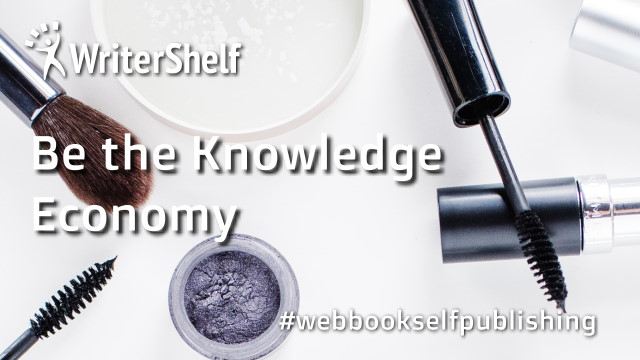8 Ingredients That Should Be In Every Guy’s Skincare Routine
1.07K
0
·
2019/12/13
·
7 mins read
☕
WriterShelf™ is a unique multiple pen name blogging and forum platform. Protect relationships and your privacy. Take your writing in new directions. ** Join WriterShelf**
WriterShelf™ is an open writing platform. The views, information and opinions in this article are those of the author.
Article info
Tags:
Date:
Published: 2019/12/13 - Updated: 2020/02/10
Total: 1556 words
Like
or Dislike
More from this author
More to explore









Garrett Munce
For most men, dipping their toe in the world of skincare can be overwhelming. There are so many products, so many hard-to-pronounce words, so many steps! But an effective skincare routine doesn’t have to be complicated. That’s great news for men since they tend to favor simple, quick regimens with minimal steps.
When it comes to skincare, it’s all about the ingredients you’re using. Think of your routine like your diet. Your body needs certain nutrients to function properly, and most of us give at least some thought to what we put into our bodies so we can workout better, have more energy, and function at a higher level. Your skin is the same way. Considering what you’re putting on your face will ensure your skin is as healthy as it can be.
It’s been scientifically proven that men’s and women’s skin has subtle differences. Men’s complexions tend to be thicker (by up to 25 percent — depending on who you ask), have larger pores, and produce more sebum (read: oil). Men also sweat about twice as much as women, and their sweat contains more lactic acid, which raises the pH balance. This doesn’t mean, however, that men can only use products that say “for men” on the label. Many of these products are not actually formulated specifically for a man’s skin, and, even if they were, the jury is out on whether the difference between men’s and women’s skin is drastic enough to warrant different products.
Instead, men should choose products based on their skin type. If you don’t know your skin type, your first stop should be a trip to your dermatologist or your aesthetician, who will be able to analyze your skin and let you know. Many men, for instance, think they have oily skin but actually have dry skin. Once armed with your skin type, identifying products that will work best for you is a more straightforward process — and remember, you can ask that same provider for recommendations.
Another thing that makes decoding the skincare aisle a little easier? Knowing which ingredients to look for and what they do for the skin. We spoke to board certified dermatologist Ron Shelton, MD, of Manhattan’s Laser & Skin Surgery of New York to find out what ingredients should (at a minimum!) be in every man’s skincare routine.
1. SUNSCREEN
“The most important skincare ingredient every man should have in his routine is sunscreen,” says Dr. Shelton. “Daily sunscreen use is very important to reduce further aging of the skin.” Something else it reduces the chances of? Sun damage and skin cancer, which has been shown to affect more men than women. What kind of sunscreen you use is a personal preference. Chemical sunscreens (like Jaxon Lane Rise & Shine Sunscreen) work by absorbing UV rays and dispersing them, while physical sunscreens (like REN Clean Screen Mattifying Face Sunscreen) form a protective layer on the skin to reflect rays. Shelton notes that “with perspiration, some sunscreens will run down from the forehead and irritate the eyes.” In that case, he recommends mineral-based, physical sunscreens. Remember to always use a sunscreen that is SPF 30 or higher.
2. HYALURONIC ACID
Chances are you’ve seen the word ‘hyaluronic acid’ on bottles of moisturizer and serums and that’s because it’s one of the most important and universal skincare ingredients. This naturally occurring substance is vital to skin cells’ ability to retain moisture. It’s also a humectant, which means it has the ability to draw moisture from its surroundings. Make sure that whatever moisturizer you use contains a high percentage of hyaluronic acid (it should be listed towards the top of the ingredients list) and, if you want to go the extra mile, use a hyaluronic acid serum in addition to a moisturizer. We’re fans of layering the Peter Thomas Roth Water Drench Hyaluronic Acid Cloud Cream on top of the The Ordinary Hyaluronic Acid 2% + B5 Serum.
3. ANTIOXIDANTS
Another cornerstone of every skincare routine is antioxidants, which help control the negative impact free radicals can have on your skin. Free radicals are caused by UV rays, pollution, and other environmental factors and have been shown to increase signs of aging as well as contribute to overall inflammation of the skin. Using skincare products that contain antioxidants like vitamin C or vitamin E can reduce that inflammation and not only curb signs of aging, but also reduce the appearance of dark spots, uneven skin tone, and redness. Look for a moisturizer that contains antioxidants like OleHenriksen C-Rush Vitamin C Gel Cream or use a serum like Skinceuticals C E Ferulic.
4. RETINOL
Retinol, a derivative of vitamin A, is one of the workhorses of dermatology. These days, most of the conversation around retinol is about lines and wrinkles. While it’s a powerful anti-aging ingredient, it is also an effective tool against acne. It works by increasing cell turnover, which means it fast-tracks the production of new skin cells and helps clear away dead ones. Oh, and it’s especially important for men who haven’t been the best at wearing sunscreen. “Guys with sun damage should be using retinol,” says Dr. Shelton. “It can help reverse some signs of sun damage such as irregular coloration and can improve the collagen layers below the epidermis.” Retinols can be irritating at first, so start slow and apply it only at night. Once you start using retinol, you must wear sunscreen every day as sunlight can increase sensitivity. Beginners should first ease themselves in with a gentle version, like RoC Deep Wrinkle Night Cream.
5. PEPTIDES
Peptides are short chains of amino acids that make up of the proteins of our skin. Think about collagen and elastin (i.e. the components of skin that keep it tight and looking fresh): those proteins are made up of amino acids. Using a skincare product that contains peptides can help keep these proteins plentiful and healthy in your skin, which, in turn, will keep it looking healthier and younger. Peptides can be found in all types of products these days, but if you’re trying to keep steps to a minimum, look for a moisturizer that has them. We like Drunk Elephant Protini Polypeptide Moisturizer and First Aid Beauty Ultra Repair Hydra-Firm Sleeping Cream.
6. ALPHA AND BETA HYDROXY ACIDS
Exfoliation is key to every skincare routine, but if you suffer from breakouts and acne, using an acid instead of a scrub to exfoliate can make all the difference. Alpha hydroxy acids (think: glycolic acid or lactic acid) help to break the bonds between dead skin cells and gently slough them away from the surface of the skin. Beta hydroxy acids (like salicylic acid), meanwhile, get down into the pores and dissolves built-up oil and debris inside. Depending on your skin type, you may want to incorporate one or both. Using an exfoliating toner, like Glossier Solution, a few times a week will help get rid of dead skin cells and leave skin clear and fresh.
7. CERAMIDES
One of the most important components of your complexion is the skin barrier, a microscopic layer of lipids that helps to keep moisture inside your skin but also keep environmental pollution out. When products are too aggressive, or you exfoliate your face too much, the skin barrier can become compromised and inflammation can occur. That can lead to redness, dry skin, and even acne. “Ceramides are great in moisturizers to replace the skin’s barrier,” says Dr. Shelton. Ceramides are lipids (the same kind that make up the natural skin barrier) and using a product that can replenish them can help maintain a healthy barrier. Look for a moisturizer like Paula’s Choice Ceramide Enriched Firming Moisturizer that contains ceramides and use it morning and night.
8. CHARCOAL
You may have noticed that lots of men’s products contain charcoal, but it’s not just a marketing ploy. Activated charcoal has been used for thousands of years to absorb toxins. When it comes to your skin, Dr. Shelton says “charcoal can help absorb over-produced amounts of oil.” If you have oily skin, using a cleanser (like Odacite Black Mint Cleanser or Clinique For Men Charcoal Face Wash) that contains charcoal can help curb the production of oil and help cut down on blackheads and breakouts. It should be noted, however, that charcoal may be too harsh for people with sensitive skin, so don’t use it every day when you first start out.
One Ingredient to Avoid
“If you have sensitive skin, avoid alcohol-based products as they tend to be drying,” says Dr. Shelton. Traditionally, alcohol has been included in skincare products to help dry skin and make it less oily — at least in the short term. Long term, it can actually disrupt the skin barrier by stripping away too much oil. This is particularly a problem for people with sensitive skin, who depend on a healthy skin barrier to keep inflammation in check — but everyone should be wary of how much alcohol they’re putting on their skin. Look for products that say ‘alcohol-free’ on the label instead.
This article was originally published at AEDITION
8 Ingredients That Should Be In Every Guy’s Skincare Routine | AEDITION: From hydrating hyaluronic acid to detoxifying charcoal, The AEDITION rounds up the skincare ingredients that should be in every guy’s grooming routine.